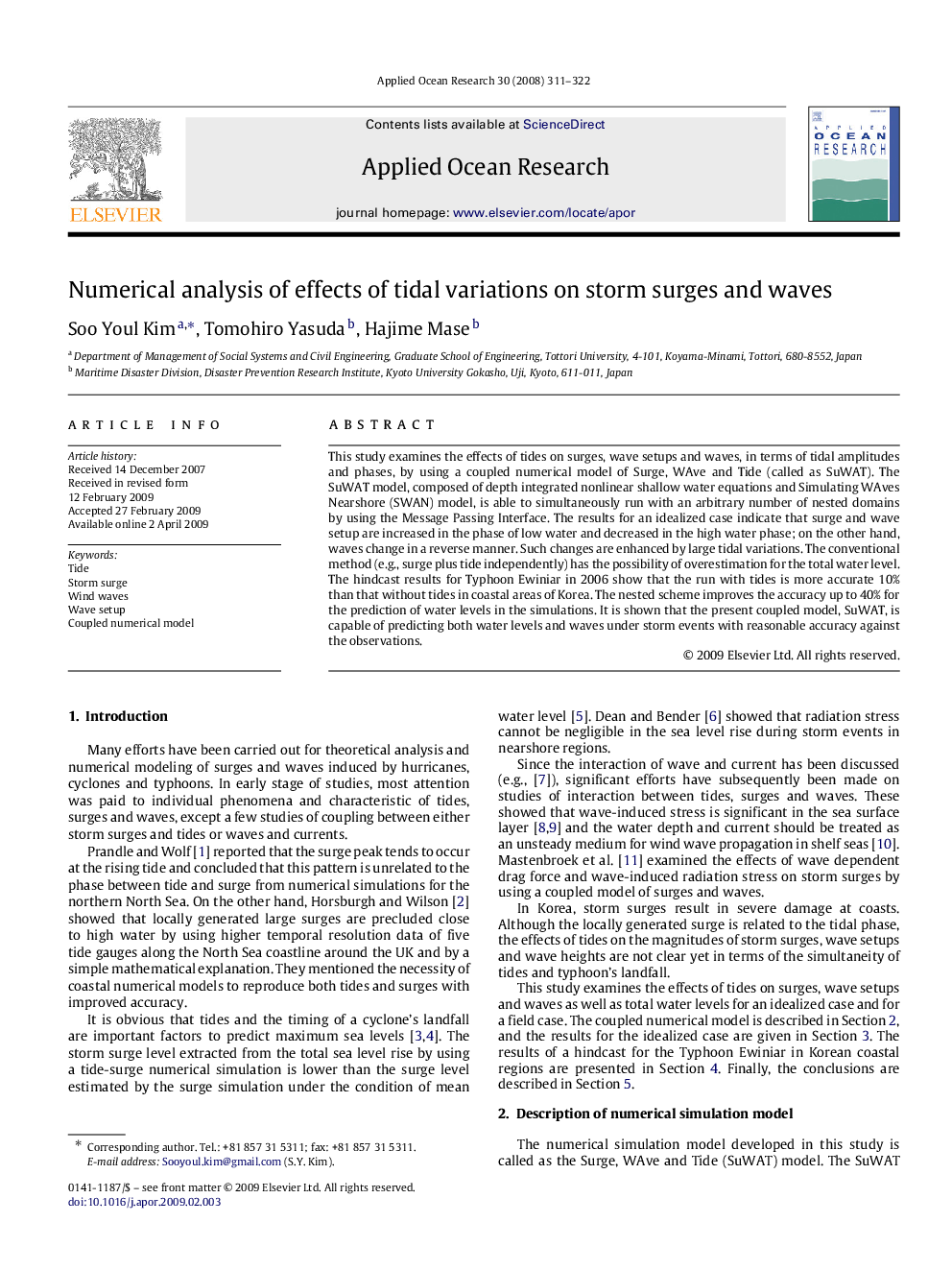| Article ID | Journal | Published Year | Pages | File Type |
|---|---|---|---|---|
| 1720386 | Applied Ocean Research | 2008 | 12 Pages |
This study examines the effects of tides on surges, wave setups and waves, in terms of tidal amplitudes and phases, by using a coupled numerical model of Surge, WAve and Tide (called as SuWAT). The SuWAT model, composed of depth integrated nonlinear shallow water equations and Simulating WAves Nearshore (SWAN) model, is able to simultaneously run with an arbitrary number of nested domains by using the Message Passing Interface. The results for an idealized case indicate that surge and wave setup are increased in the phase of low water and decreased in the high water phase; on the other hand, waves change in a reverse manner. Such changes are enhanced by large tidal variations. The conventional method (e.g., surge plus tide independently) has the possibility of overestimation for the total water level. The hindcast results for Typhoon Ewiniar in 2006 show that the run with tides is more accurate 10% than that without tides in coastal areas of Korea. The nested scheme improves the accuracy up to 40% for the prediction of water levels in the simulations. It is shown that the present coupled model, SuWAT, is capable of predicting both water levels and waves under storm events with reasonable accuracy against the observations.
